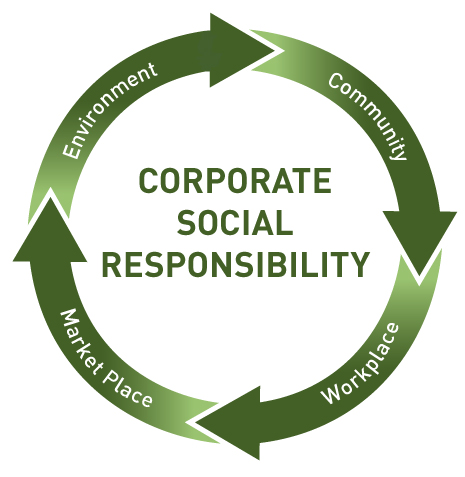Corporate Social Responsibly (CSR), the act of giving back to the society. As it sounds to most people, it is also the act of expressing good ethics; which, in the long run, is used to build the company’s image. However, the only ones that can actually succeed are the ones that consumers view as having genuine ethics instead of being a money magnet. Therefore, this brings us to the main topic: How do firms genuinely express their CSR campaigns.
Before we discuss successful CSR implementations, let’s start up with the failed CSR attempts: Failed CSR attempts are attempts that are not able to keep up with the campaign that they proposed. A very popular example is Exxon Mobil’s Green Washing. This is when Exxon Mobil advertised that they were being environmentally sustainable whilst releasing emissions more than ever (Dreams, Henn and Dreams, 2017). Once their false advertisement had been revealed, customers steer their trust away from Exxon Mobil, causing a decrease in customer base and investors.
Their attempt of misrepresenting their own company can backfire them in the future once the truth is discovered. This causes an effect even worse than not having a CSR campaign in the first place. Lawsuits may be involved since false advertisement is strictly against the law.
On the contrary, a successful CSR implementation will be when companies always commit to the scheme that they advertised. For example, General Electric (GE) fully committed to being more environmentally sustainable by inventing and selling cloud wind turbine systems (Gerenewableenergy.com, 2017). This commitment builds credibility for GE as well as introduces a new customer base for GE (Customers that prefer clean energy production).
In conclusion, firms and corporations should be cautious and anticipative in choosing a CSR campaign in order to prevent future flaws that may affect their revenue in the long run.
Biblography
Gerenewableenergy.com. (2017). Wind Turbines | GE Renewable Energy. [online] Available at: https://www.gerenewableenergy.com/wind-energy/turbines [Accessed 11 Nov. 2017].
Dreams, C., Henn, J. and Dreams (2017). ExxonMobil Takes The Olympic Gold In Deceitful Advertising. [online] Common Dreams. Available at: https://www.commondreams.org/views/2016/08/11/exxonmobil-takes-olympic-gold-deceitful-advertising [Accessed 11 Nov. 2017].
Image source:
Renewableenergyworld.com. (2017). Corporate Social Responsibility — How Renewables Have Expanded the Field. [online] Available at: http://www.renewableenergyworld.com/ugc/articles/2017/05/23/corporate-social-responsibility–how-renewables-have-expanded-the-field.html [Accessed 11 Nov. 2017].
Word count: 305




